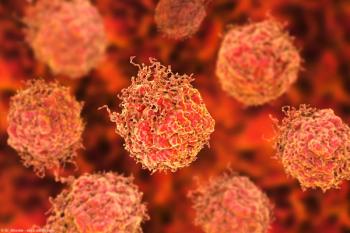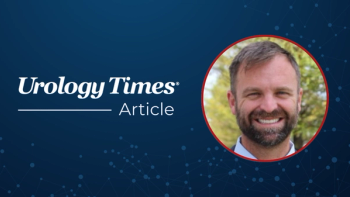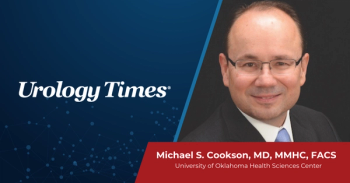
Delayed RP does not raise adverse pathology risk
Men with prostate cancer who meet the criteria for active surveillance and undergo delayed radical prostatectomy after a period of active surveillance do not have a higher risk of adverse pathology compared with men with similar pre-treatment biopsy features who undergo immediate prostatectomy.
Orlando, FL-Men with
The finding from a recent study indicates that a window for cure was likely not missed by active surveillance in appropriately selected men with
As part of his group’s study, Dr. Welty and colleagues reviewed clinical data for men on active surveillance for at least 6 months following diagnostic biopsy who subsequently underwent prostatectomy. Active surveillance consisted of quarterly PSA testing, re-imaging with transrectal ultrasound, and serial prostate biopsy.
They examined pathologic outcomes associated with delayed prostatectomy following active surveillance compared with immediate treatment of prostate cancer with similar grades in two cohorts of men.
“We chose adverse pathology because it’s an earlier endpoint to look at and it’s correlated with longer term outcomes,” said Dr. Welty, clinical fellow at the University of California, San Francisco, who worked on the study with Peter Carroll, MD, MPH, and colleagues.
Adverse pathologic features were defined as upstaging to pT3/N1 disease, positive surgical margins, or an upgrade to Gleason 4+3 disease.
The first cohort consisted of a subset of men who initially met strict criteria for active surveillance, defined as Gleason score ≤6, PSA ≤10.0 ng/mL, clinical stage <T3, ≤ 33% biopsy cores positive, and ≤50% of any single core positive. In this group, pathologic outcomes were compared between the 157 men who were managed by active surveillance and then underwent prostatectomy and the 521 men who had immediate surgery.
The median time to prostatectomy was 3 months in the group undergoing immediate surgery and 20 months in the delayed group.
“We showed that there is a higher rate of adverse pathologic features in the men who underwent delayed RP, which is not surprising because these were men who were observed looking for higher risk disease, and then were recommended and selected for surgery,” said Dr. Welty. “This is a very selective group of patients with higher risk disease.”
Higher major upgrade rate in delayed group
The rate of any adverse pathology was 44% in the delayed group versus 23% in the immediate group (p<.01). Twelve percent in the delayed group and 5% in the immediate group (p<.01) had a major upgrade (increase in Gleason score at surgery and the presence of primary pattern 4 or 5). Extracapsular extension (25% vs. 11%; p<.01), seminal vesicle invasion (4% vs. 2%; p=.03), and positive margins (21% vs. 11%; p<.01) were all more common in the delayed group. The adjusted odds of any adverse pathology in the immediate versus delayed group was 0.34 (p<.01).
The second cohort consisted of a subset of 54 of the men who met active surveillance criteria who were then upgraded to Gleason 3+4 disease on follow-up biopsy. They were matched to 162 men who had similar PSA, age, and biopsy characteristics (Gleason 3+4) and who had immediate surgery. These two groups had similar rates of all adverse pathologic features, including any adverse pathology (44% in the immediate group vs. 46% in the delayed group), major upgrade (15% vs. 13%), extracapsular extension (24% vs. 20%), seminal vesicle invasion (4% vs. 7%), and positive margins (21% vs. 20%).
Of the 162 immediate surgery and 30 delayed surgery patients with at least 3 years of follow-up, PSA recurrence-free survival after surgery was 88% versus 100%.
“Essentially, we’re saying that likely many of these men in the delayed group just had under-recognized Gleason 3+4 disease to start with,” with no worse outcomes during the time it took to recognize the 3+4 disease, said Dr. Welty.
“The point we make is that by using this early endpoint of adverse pathology, you don’t miss a window for cure in these men who have Gleason 3+4 disease appreciated on follow-up biopsy during active surveillance,” he said.
More on Prostate Cancer
Newsletter
Stay current with the latest urology news and practice-changing insights — sign up now for the essential updates every urologist needs.


















